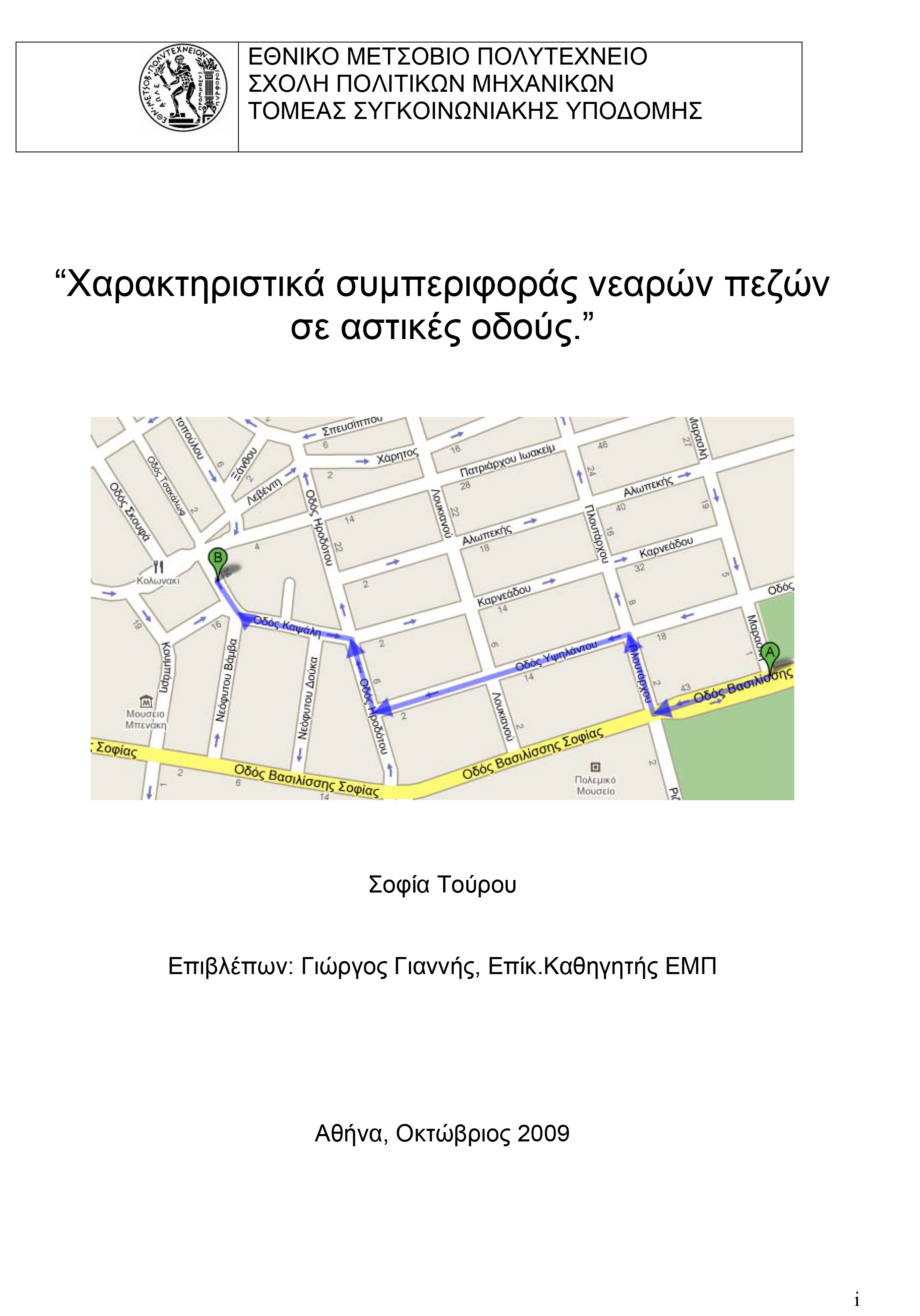
This Diploma Thesis aims to investigate the characteristics of pedestrians’ behavior along a whole route. More specifically, an attempt is made to describe the walking speed, the way in which a pedestrian chooses a particular link to cross the road along a route and the route choice. In order to achieve this objective, an experimental process in real road conditions was carried out. A linear regression model was developed to investigate the impact of certain parameters in the walking speed. A binary logistic model was also developed to investigate the impact of the parameters in the pedestrians’ decision on which section to cross and in the route choice. From the models application it appears that the age and the gender of the pedestrian, the low pedestrians’ flow and the choice of the most pleasant route have statistically significant impact to the walking speed. Concerning to the link that the pedestrian chooses to cross, the traffic gap, the “last choice” crossing, the existence of recreation land uses, the choice of walking in plain surface instead of slope and the low pedestrians’ flow define his decision. The pedestrians route choice is influenced by the possibility to walk often, the choice of the fastest route and the number of the direction’s changes.
| ID | ad25 |
| Presentation | |
| Full Text | |
| Tags | driver behaviour, pedestrians, statistical modelling, traffic management |







